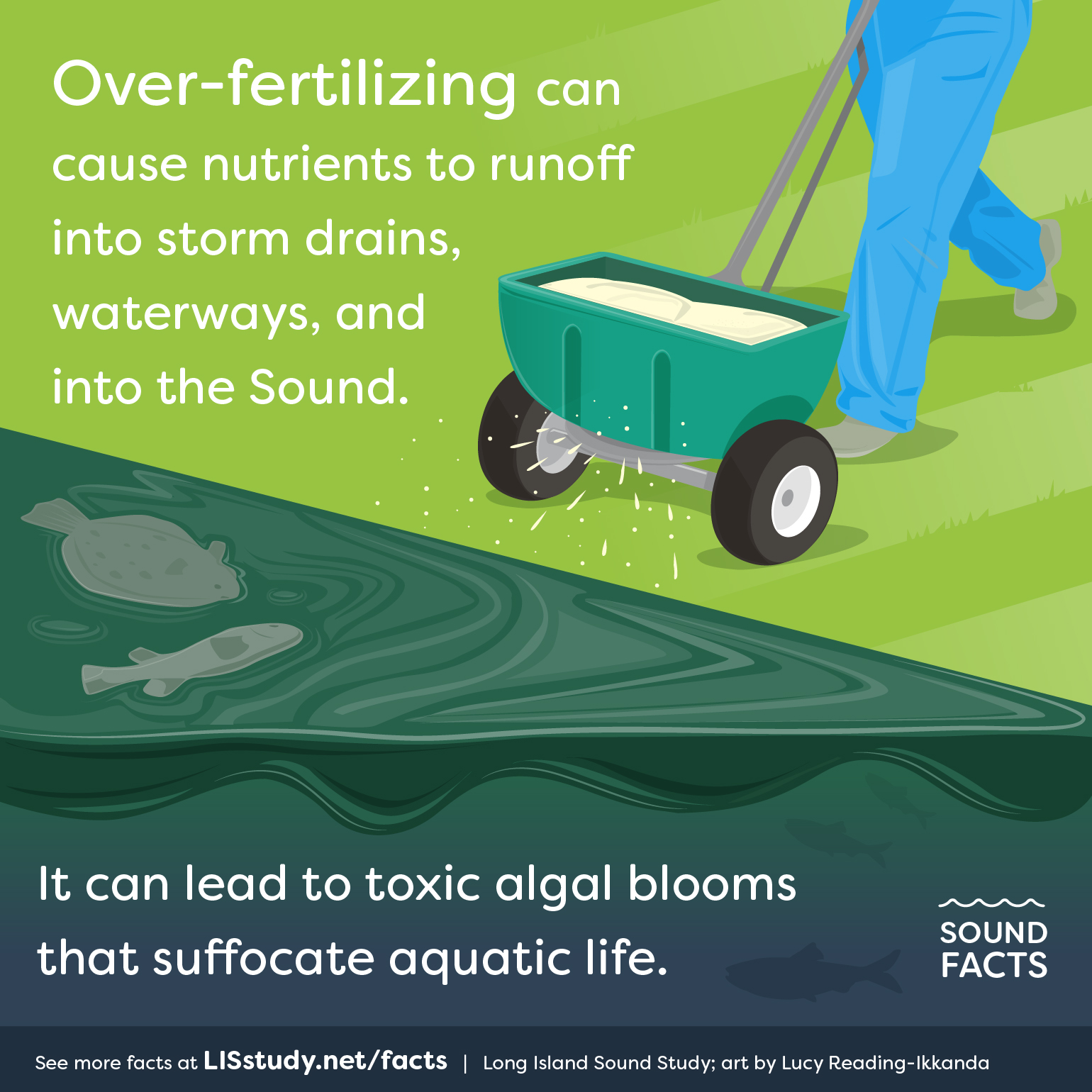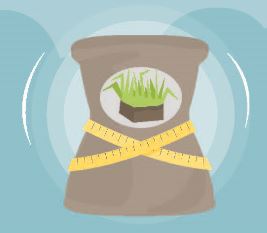Healthy Lawns, Healthy Sound

You may not realize it, but your lawn has a big impact on the health of Long Island Sound.
Nitrogen-based fertilizers are often used to nourish grass, giving it a vibrant green look. But when too much fertilizer is used, rainfall washes across sidewalks, driveways, and even lawns and gardens, carrying with it the extra fertilizer, which is filled with nutrients including nitrogen. Stormwater carries the overflow of nutrients to local waterways which ultimately drain into the Sound.
Once local waterways reach the estuary, the nitrogen in them can trigger the growth of algae populations that kill fish, poison shellfish that are later consumed by humans, shade underwater plants, and reduce the amount of oxygen in the water. As algal blooms decompose on the waters surface, oxygen is consumed in the process and the dead algae sinks to the sea floor. Oxygen levels are then left depleted, leaving aquatic life to suffocate and die.
Tips for Sustainable Lawncare
Follow these tips, adapted from the Long Island Nitrogen Action Plan, to keep both your lawn and the Sound healthy.

- Don’t start fertilizing! If you’re not currently using fertilizer and you are happy with how your lawn looks, then don’t start fertilizing. Many lawns can be aesthetically pleasing without any added fertilizer.
- Eliminate or shrink your lawn. Consider reducing the lawn area requiring fertilizer. One of the most effective ways to protect local water resources, is to replace lawns or a portion of them with less resource-intensive landscaping, also known as sustainable landscaping. Sustainable landscaping makes use of native plants to help reduce the amount of fertilizer, pesticides, and water needed to maintain the landscape. Often, native plant species require little to no extra water and fertilizer and can help to absorb and filter rainwater. Sustainable landscaping can also be aesthetically pleasing, sometimes increasing a homeowner’s property value.
- Keep those grass clippings on your lawn. Mulching mowers finely chop grass into small pieces which get deposited into the lawn and decompose quickly. You can consider the small pieces left behind as natural fertilizer added to your lawn every time you mow. Leaving grass clippings behind can allow you to lessen, or eliminate, chemical fertilizer application. As a general rule, no more than a third of the grass blade should be removed during a single mowing. And it’s also good practice to keep the height at least three inches high, which encourages deeper, healthier roots.
- Apply less fertilizer to your lawn. If you decide to use fertilizer, especially on a well-established lawn, then apply one-third to one-half the amount recommended on the fertilizer bag. If you are satisfied, then you applied the right amount. Nice work!
- Timing is everything. If you are going to fertilize, then apply it at the right time – close to Memorial Day and/or Labor Day. Fertilizer shouldn’t be applied before April or after mid-October. Nor should it be applied during the hottest summer months when grass is dormant. Grass simply cannot efficiently absorb fertilizer at this time so don’t bother trying – you’ll just waste fertilizer and money.